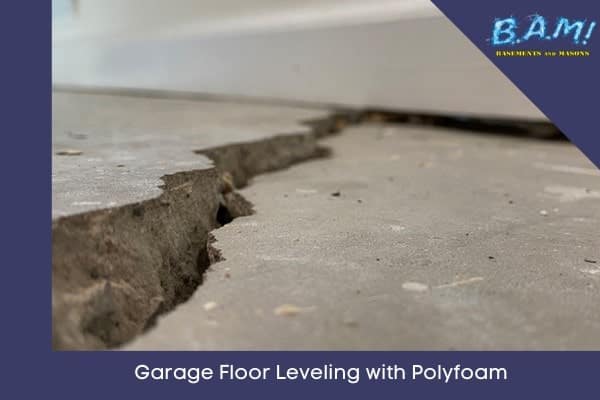The smart Trick of Best Basement Waterproofing That Nobody is Talking About
The smart Trick of Best Basement Waterproofing That Nobody is Talking About
Blog Article
All about Best Basement Waterproofing
Table of ContentsBest Basement Waterproofing Can Be Fun For AnyoneBest Basement Waterproofing Things To Know Before You Get ThisSome Ideas on Best Basement Waterproofing You Need To KnowThings about Best Basement WaterproofingBest Basement Waterproofing for Dummies
AdvantaClean's trained professionals and technicians will certainly situate the water resource. If wall or slab fractures are existing, we will inject polyurethane and epoxies into the fractures and secure the concession, preventing additional wetness from getting in.Correct grading around the home to direct moisture away from the framework. Putting up, fixing, or cleansing seamless gutters and downspouts. Inside or external waterproofing with filler, sealant, and/or water resistant paint. Setting up basement ventilation systems, conditioning systems, or basement dehumidifier systems to get water out of your basement. Selecting AdvantaClean's basement waterproofing services is an effective way to treat dampness and stop mold and mildew from endangering the framework of your home and the health of your household.
If there's condensation on the outside of the aluminum foil, you have high humidity in your cellar. If the aluminum foil has condensation on the within surface area (next to the wall surface), the soil around your residence might be normally damp from a high water table or poor dirt drain.
You can waterproof just your indoor walls, which may resolve the trouble. Or you can waterproof your exterior walls, which is a much better wager but more pricey. Right here's the scoop on the different kinds: These thick finishings are cement-like. Once they dry, they adhere completely to concrete and masonry wall surfaces.
About Best Basement Waterproofing
Swirl the brush at the final stage of application to give the wall surface an eye-catching, completed appearance. Concrete waterproof finishings can not be used to formerly repainted surface areas; examine the label. A 5-gallon bucket prices about $60. Also called densifiers, they are ideal only for wall surfaces that have not been painted or sealed.
Yet you clean, roll, or spray it on a lot more thickly one gallon covers just 75 square feet, not the 300 square feet common with common paint. Water-proof paint is fine for DIY application. You can apply it over painted surface areas, and paint over it once it's healed (one gallon prices $37).
It can set you back $10,000 to $15,000, depending on the work needed (Best Basement Waterproofing). Outside waterproofing involves excavating all around the house to the complete deepness of the foundation wall surfaces, after that setting up a water-proof covering or membrane layer covered by drainage panels.
Some Known Facts About Best Basement Waterproofing.
A cellar without waterproofing is kind of like that. Your basement doesn't want to go with a downpour without appropriate security simply as much as you don't desire to.

Exterior waterproofing is a waterproofing approach that involves securing your home from the exterior. The foundation wall surfaces are then cleaned, sealed, and covered with a waterproof membrane or sealer.
The Single Strategy To Use For Best Basement Waterproofing
It's an extra engaged process that calls for digging up your yard, which is pricey and taxing. Outside waterproofing involves removing every little thing bordering the house, consisting of verandas, driveways, walkways, landscaping, AC systems, decks, and so on. If any of the find out work was our website done incorrectly and water is still entering your cellar, there isn't much you can do to fix or repair it.
Inside cellar waterproofing entails waterproofing from the inside. Any type of water that leakages into your cellar is rerouted before it touches your flooring.
It's a reliable method to water-proof your cellar. The drawback of indoor cellar waterproofing mainly pertains to the installment process. This method calls for stored things, furniture, and built-in shelving or cabinets to be relocated from touching the cellar walls. And during setup, your cellar can not be used. The greatest distinction between the 2 approaches is this: Outside waterproofing is a preventative solution and interior waterproofing is a rehabilitative solution.
The Of Best Basement Waterproofing
To conclude, outside and interior cellar waterproofing are both efficient approaches of safeguarding your home from water damage. Outside waterproofing develops a barrier that avoids water from entering your home, this post while interior waterproofing redirects water that does enter your home. And it's important to keep in mind that outside waterproofing is a pricey and turbulent installation procedure when contrasted to indoor waterproofing.
Whichever technique you choose, make certain you choose a reliable and reliable specialist for the job. Both approaches need skilled workers to manage the job. If you have any kind of questions about cellar waterproofing, please connect to us. And if you remain in our service area and have water in your cellar, contact us for a cost-free, no-obligation home examination.
You can fill in our type below. Best Basement Waterproofing, start a chat in the bottom right-hand corner, or call us at 1-800-827-0702
Report this page